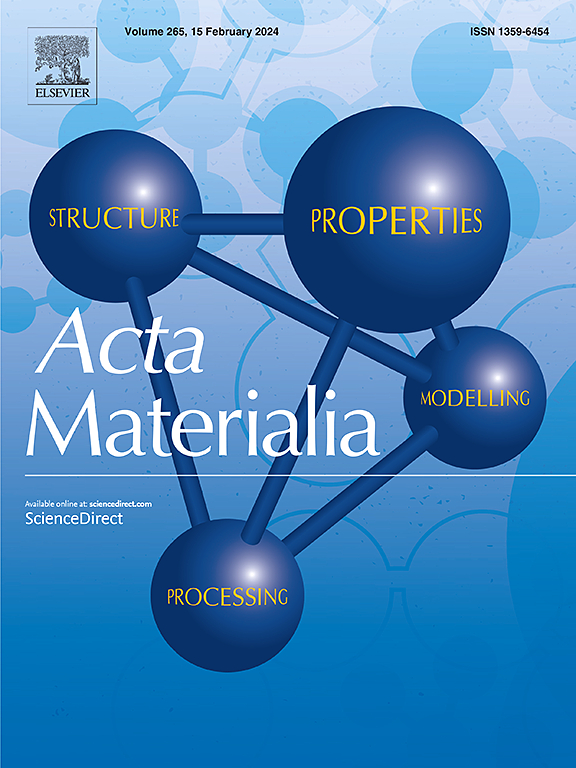New insights on the deformation mechanism of fretting fatigue in Ti-6Al-4V
IF 8.3
1区 材料科学
Q1 MATERIALS SCIENCE, MULTIDISCIPLINARY
引用次数: 0
Abstract
Fretting fatigue (FF) in the dual-phase Ti-6Al-4 V (Ti-64) alloy is a critical failure mode in engineering applications. Despite extensive research on macroscopic fatigue life prediction, the underlying microscopic deformation mechanisms remain poorly understood. In this study, a comprehensive FF investigation was conducted using customised fretting fatigue testing equipment and finite element simulations. The microstructural evolution of regions susceptible to FF crack initiation and propagation was systematically analysed, providing new insights into the deformation mechanisms. For comparison, low-cycle fatigue tests, referred to here as plain fatigue (PF), were also performed. A unique stratified structure was observed at FF crack initiation sites, consisting of (i) an outermost recrystallized nanocrystalline layer, (ii) an oxidation layer, (iii) a deformation twinning layer, and (iv) an underlying zone with a high density of dislocations. Notably, the formation of TiO, accelerated by oxygen transport through microcracks, plays a crucial role in crack initiation and propagation due to volumetric expansion effects. Additionally, the simultaneous occurrence of both extension and compression deformation twinning, along with a high density of 〈c + a〉 dislocations, provides direct experimental evidence of severe microplasticity in the slip region. The selected FF simulation parameters were directly correlated with the experimentally observed crack initiation and propagation, enabling the development of a predictive model for both FF and PF lifetimes. These findings contribute to a deeper understanding of FF deformation mechanisms and are expected to enhance the fatigue life prediction and material design of Ti-64 in critical engineering applications.


Ti-6Al-4V微动疲劳变形机理的新认识
双相 Ti-6Al-4V (Ti-64) 合金的摩擦疲劳(FF)是工程应用中的一种关键失效模式。尽管对宏观疲劳寿命预测进行了广泛研究,但对其微观变形机制仍知之甚少。在本研究中,我们使用定制的摩擦疲劳测试设备和有限元模拟进行了全面的摩擦疲劳研究。系统分析了易受 FF 裂纹萌发和扩展影响的区域的微观结构演变,为了解变形机制提供了新的视角。为了进行比较,还进行了低周期疲劳试验(此处称为普通疲劳(PF))。在 FF 裂纹起始点观察到一种独特的分层结构,由 (i) 最外层的再结晶纳米晶层、(ii) 氧化层、(iii) 变形孪晶层和 (iv) 具有高密度位错的底层区域组成。值得注意的是,由于体积膨胀效应,氧气通过微裂纹加速 TiO 的形成,在裂纹的萌发和扩展过程中起着至关重要的作用。此外,同时出现的拉伸和压缩变形孪晶,以及高密度的位错,为滑移区严重的微塑性提供了直接的实验证据。所选的 FF 模拟参数与实验观察到的裂纹起始和扩展直接相关,从而开发出了 FF 和 PF 寿命预测模型。这些发现有助于加深对 FF 变形机制的理解,并有望提高关键工程应用中 Ti-64 的疲劳寿命预测和材料设计。
本文章由计算机程序翻译,如有差异,请以英文原文为准。
求助全文
约1分钟内获得全文
求助全文
来源期刊

Acta Materialia
工程技术-材料科学:综合
CiteScore
16.10
自引率
8.50%
发文量
801
审稿时长
53 days
期刊介绍:
Acta Materialia serves as a platform for publishing full-length, original papers and commissioned overviews that contribute to a profound understanding of the correlation between the processing, structure, and properties of inorganic materials. The journal seeks papers with high impact potential or those that significantly propel the field forward. The scope includes the atomic and molecular arrangements, chemical and electronic structures, and microstructure of materials, focusing on their mechanical or functional behavior across all length scales, including nanostructures.
 求助内容:
求助内容: 应助结果提醒方式:
应助结果提醒方式:


